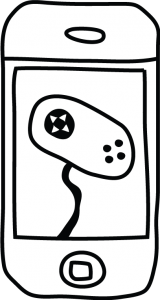 (We have created an 8-part comprehensive report containing a series of two-to-three page “briefs.” This is part 5: The link between mLearning and learning games. If you would like to see the collection in its entirety, click here.)
(We have created an 8-part comprehensive report containing a series of two-to-three page “briefs.” This is part 5: The link between mLearning and learning games. If you would like to see the collection in its entirety, click here.)
“Gamification” of learning is one of the most exciting trends we’ve seen – and it’s partially being driven by the increased interest in mLearning and mobile games in general. Gamification of learning is derived from the concept of the “gamification of the work place” and the gamification of almost everything. (See the CNN article on the gamification of reading the news online.) In the learning realm, gamification is a design strategy intended to increase learner interest, seat time, and post-learning retention. Examples of “gamification” include:
Factoring in fun/pleasure. Recognize that we do what we enjoy doing and if we make learning enjoyable, people stay engaged longer. (Contrary view: At mLearn, we talked to a person in charge of compliance training for an oil company…he bristled at the thought of training being fun. He said compliance is not about fun – it’s about safety and adhering to government regulations. While we agree, we think it’s important that people actually remember safety practices; they are more likely to remember them if they are fully engaged in learning them!)
Establishing competition and/or rewards. This ties in strongly to the concept of feedback loops, which is a known driver of behavior change. See the July 2011 article in the Wired magazine article, Harnessing the Power of Feedback Loops, on how to engineer real change in human behavior.
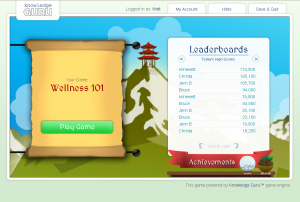 Making it social so people can discuss and compare their performance against the performance of others. Easy example: Game leader boards where people can compare their score against others – and keep playing to achieve higher status on the leader board or to achieve a personal best on the leader board. BLP’s own Knowledge Guru has a great set of leader boards to encourage this behavior.
Making it social so people can discuss and compare their performance against the performance of others. Easy example: Game leader boards where people can compare their score against others – and keep playing to achieve higher status on the leader board or to achieve a personal best on the leader board. BLP’s own Knowledge Guru has a great set of leader boards to encourage this behavior.
If you’re ready to think about games, here are several games to download and play. Your goal is to evaluate how you can transfer the game design concepts to a learning game. Only one of them classifies as a “learning game,” but all contain elements that can be transferred to a learning game.
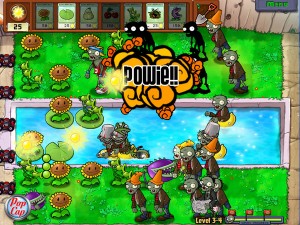 1. Plants vs. Zombies
1. Plants vs. Zombies
(iPhone, iPad, Android)
Great example of incorporating the “rules of play” into the play itself. Early levels of the game teach you how to play without any explicit teaching of the rules. This concept leverages the fact that no one likes to read directions.
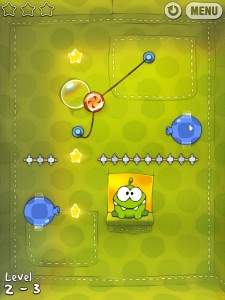 2. Cut the Rope
2. Cut the Rope
(iPhone, iPad, Android)
Like Plants vs. Zombies, this game does not give you rules. It is a problem-solving/strategy game that can be played in very short spurts – two minutes or less.
Note the feedback tools in the form of Levels and Stars.
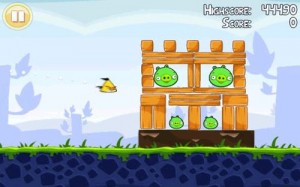 3. Angry Birds
3. Angry Birds
(iPhone, iPad, Android)
What can we say? People are addicted to this game. The question you need to answer is why? Has anyone in your organization ever been addicted to one of your learning courses?
The other thing to note….all your employees are only a couple clicks away from Angry Birds at any time. (Remember their phones are always with them.) If they find games more engaging – why not package your learning into games?
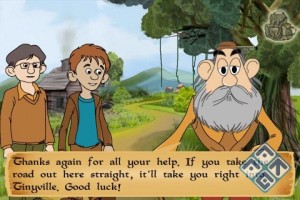 4. Jim and Frank’s Blood River Files
4. Jim and Frank’s Blood River Files
(iPhone, iPad)
This is a puzzle game and a narrative. Consider how you could weave puzzle-solving into a learning game.
 5. Stack the States
5. Stack the States
(iPhone, iPad)
A quiz-style game focused on learning the geography of the U.S. As you answer questions correctly, you collect states.
 Our Bottom-Line advice?
Our Bottom-Line advice?
Start thinking about how you can leverage games. Learning games will be as big as mLearning itself as people look for ways to engage learners who are easily disengaged. There is tremendous potential to be tapped in using games as a means of driving behavior. Games can drive behavior and spark motivation in ways that a traditional Click Next to continue experience never will.


